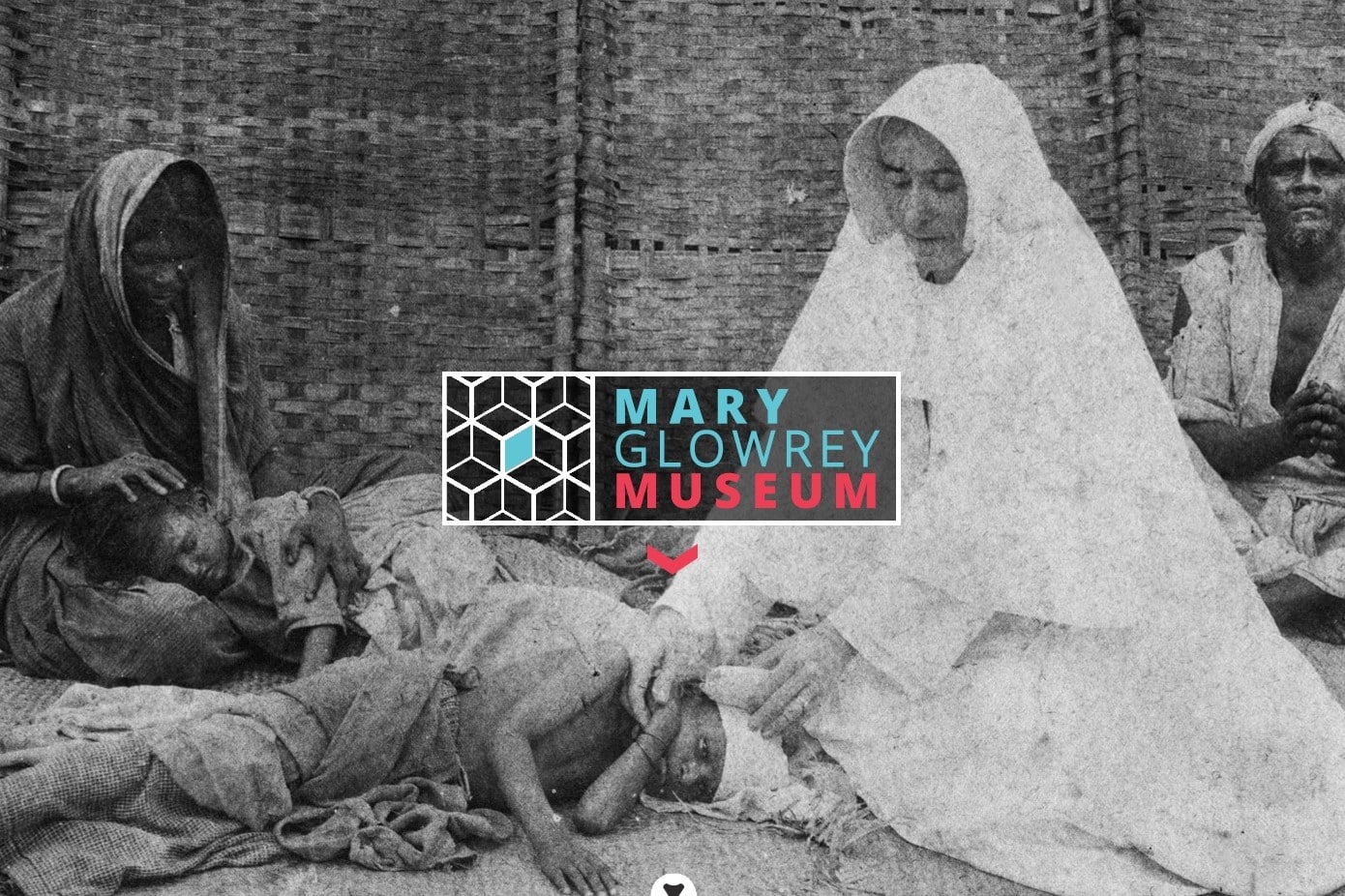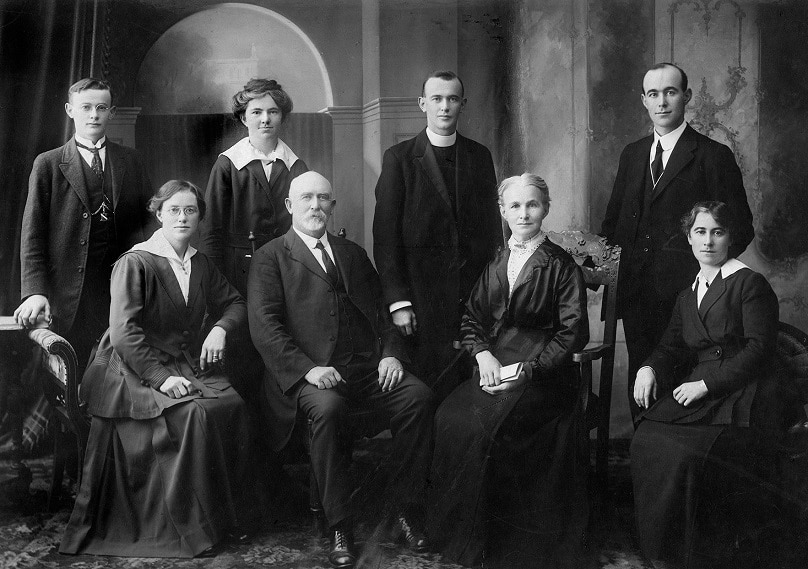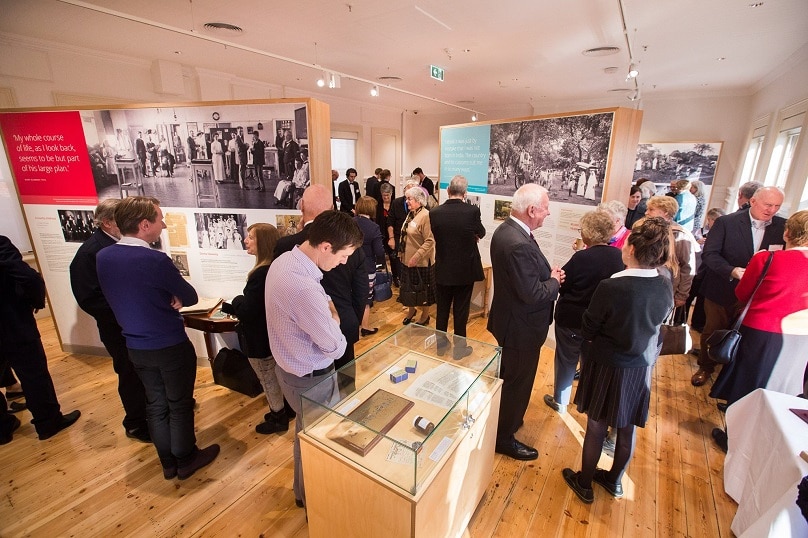
Friday 23 June marks the Church’s Solemnity of the Sacred Heart of Jesus this year.
The celebration is a moveable feast tied to the Feast of Corpus Christ and it celebrates mystical insights into the mystery of God’s love in Jesus Christ: “These two loves to us impart, Divine love in a human heart” as expressed by the Australian Catholic poet and hymn lyricist, James McAuley.
The Sacred Heart of Jesus is depicted in iconic form, as a devotional and liturgical reminder of the tangible, flesh-and-blood but infinite power of God’s love through Jesus Christ. Unfortunately some of the more garish and mass-produced depictions of this image can leave contemporary Catholics simply puzzled rather than personally attracted to the great devotional tradition.
This year, Friday 23 June also marks the anniversary of the birth of a baby girl, who was delivered to Mrs Margaret Glowrey, 130 years ago in the small Victorian Western District’s town of Birregurra.

This infant girl was baptised “Mary” but later was professed as Sister Mary of the Sacred Heart of the (originally Dutch) Order of Jesus Mary and Joseph. The Sacred Heart of Jesus became a divine banner to which Sr Mary very deliberately entrusted herself, and it would be in the name of the love of Christ, that she would become a pioneer in the practice of medicine and a visionary in healthcare organisation and training in her adopted India.
Her life-long, expert and practical love as a missionary-sister doctor in a foreign land is a vivid example of how powerfully and magnificently the love of Christ can charge a Christian human heart.
Dr Mary Glowrey was the first Catholic woman to be both a consecrated woman and a medical doctor. She is only the second Australian-born person to reach the status of Servant of God in recognition of her outstanding goodness and virtue.
One month ago, the unique Mary Glowrey Museum was blessed and opened in Melbourne to honour her work and to inspire and form others by her example.

For 36 years, as Sr Mary of the Sacred Heart, she treated thousands of patients, very often as the sole practitioner, educator and even hospital accountant. She supervised and spearheaded the care for hundreds of thousands of Indians of all ages and classes. She envisaged and advocated tirelessly for a Catholic medical school in India and St John’s Medical College in Bangalore opened after her death and has since become a hub of medical training, research and tertiary care.
Sr Mary Glowrey trained midwives, compounders and nurses from among the local women, studied native cures, used her observational powers in the study of factors that enhance pregnancy and fertility and improvised nutritional supplements in times of dire shortage. She advocated for greater medical and nursing training, she taught first aid at the convent school and somehow managed to keep abreast with medical and ethical literature from around the world. She travelled to outlying encampments and villages, in severely deprived areas during periods of acute heat, war, famine and drought.
For almost 10 years, prior to coming to India, Dr Mary Glowrey had balanced heavy duties as a doctor in Melbourne’s major hospitals, and in her own Collins Street practice (she was a specialist in ophthalmology) and as the quietly inspirational first president of an emerging women’s social action movement, the Catholic Women’s Social Guild (later to become the Catholic Women’s League of Victoria and Wagga Wagga and part of the federated Catholic Women’s League Australia).
I believe that we can clarify the place of the Sacred Heart in the Church and in our own lives by attending more deeply to Dr Mary’s life and to some of thoughts contained in her writing.
In 1922, Mary’s wrote from India to her sister Eliza who was very ill, suggesting a comforting maternal relationship with the love of Christ, one which even the weakest and most sick could imagine without agitation or struggle:
Don’t tire yourself by trying to say long prayers or many prayers … Take your rest in the Sacred Heart. ‘In peace in the self-same I will sleep and I will rest for Thou O Lord, singularly hast settled me in hope’ (Psalm 4:18). Ask the Blessed Mother to cradle you as a child in the Sacred Heart of her Jesus, and then to sing for you the songs and lullabies which delighted Her Baby …
Despite her longing to serve the women of India, Mary always felt the separation from home and she realised the wrench caused to her family by her life-long voyage away from her warm and beloved family and her place of birth.
In a deeply spiritual letter written from St Joseph’s Convent in Guntur to her dear “Mama and Dada” back in the Mallee where the family re-located, she gently reveals to them the sole and living Source of her vision, energy and daring: the sacrificial Heart of Christ.
“I cannot return adequate thanks, so fall back on the Sacred Heart to pay my debt.”
She consoles her devout Irish-Australian parents by reminding them that it was they, in nightly prayers and by their own example of day-to-day charity, who had consecrated the entire family to the Sacred Heart of Jesus: “… for is it not you who have given me to Him?”
Mary reminds them, with her typically gentle humour, that consecration is no empty or quaint gesture but one that involves the flesh and blood of the whole family: “You have given me, the one He chose; and though I must admit He has queer taste (I say that in all reverence of course) yet He did choose me, and I thank Him for it and ask you both to help me thank Him.”
At a very early age, Mary realises that God’s “Will” was not some thankless, remote and crushing force but the more discerning and loving task of living so that everything she intends delights the Lord. She writes that early in her life a particular prayer became the core of her life. It begins with a request to learn complete abandonment of ego and ends with these humble words:
I feel in myself a great wish to please Thee and a great inability to do so without a special light and assistance which I can look for only from Thee. Do Thou accomplish Thy Holy Will in me, O Lord. I oppose it, I well know, but I would fain not do so. It is for Thee, O Divine Heart, to do all.
After modelling her plans and dreams around this prayer for over twenty years without knowing its author she writes: “I discovered that it had been written by Blessed de la Colombière SJ, the Apostle of the Sacred Heart. The prayer had in fact become my spiritual director.”
At almost every turn of her vocational journey, Mary felt that her voyage into the unknown was being confirmed by the emblem of the Sacred Heart. On first arriving at the Convent in Guntur in India from Australia in 1920, Mary writes: “I was first brought into the Church where there was a lovely statue of the Sacred Heart with arms outstretched above the altar. Over the sanctuary I read the words ‘The Lord is here and calleth for you”. These words made a deep impression to me.'”
We see Mary’s concrete dedication to the outpouring love of Christ’s Sacred Heart in every area of her medical and pastoral care. There is nothing sentimental, delusional or self-indulgent about her difficult service of the poor, the suffering or the dying. Although she wrote in the idiom of her time, there is not a scrap of wallowing pietism in the vision of Sister Mary of the Sacred Heart.
In 1972, the Bishop of Guntur, Ignatius Mummadi, confirmed what so many of the JMJ Sisters and other acquaintances knew daily in their contact with Sister Mary. In a remarkable way, Mary was able to combine a deep interior life with an enormous but undemonstrative reserve of creative energy. She always had an eye for the solutions to the immense shortages of basic nutritional and medical resources. She preached the Gospel by seeing in her medical vision and vocation the means to touch the wounds of the body, the heart and the soul of thousands with the tender healing of Christ.
Bishop Ignatius expresses the wonder of many others:
One could not help wondering how, in the midst of all her duties she found time to study and prepare simple remedies which she could dispense to the poor without much expense. She was remarkably calm, showing no signs of impatience however much the patients taxed her.
At the end of her life, Sister Mary fell prey to an aggressive cancer which invaded her bones and eventually hampered her indefatigable service, but never her vision or her patient and engaged concern for others. The deep inner schooling of the Sacred Heart guided her to become at one with and grateful for an even deeper sharing in suffering Heart and Sacred Body of the Lord. She saw her last Holy Week in 1957 as one especially united to the sacrificial outpouring which is Christ’s love in His Passion for and upon all of humanity.
Pope Benedict XVI wrote often about the importance of the dedication of our lives to the Sacred Heart, enlivened by a biblical vigour. He could be thinking directly of Sr Mary of the Sacred Heart’s presence in the world then and today:
… authentic devotion to the Sacred Heart has retained all its effectiveness and especially attracts souls thirsting for God’s mercy who find in it the inexhaustible source from which to draw the water of Life that can irrigate the deserts of the soul and make hope flourish anew.
The work that Sister Mary Glowrey began blossomed into extraordinary and extensive network of Catholic healthcare institutions and outreach throughout India. It is now called the Catholic Health Association of India (CHAI), its member associations care for over 21 million Indians with 76,000 Healthcare professionals and over 1,000 Sister-Doctors.
‘Jesus In Your Heart We Find’ – James McAuley/Richard Connolly
